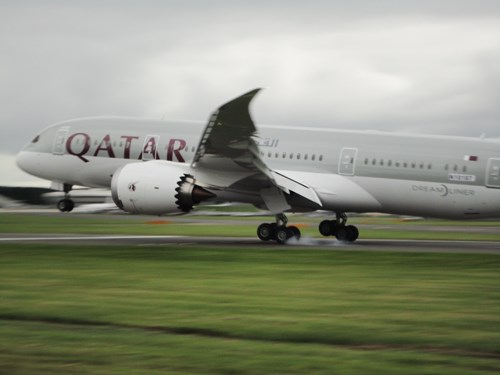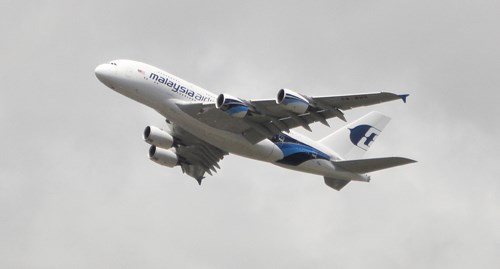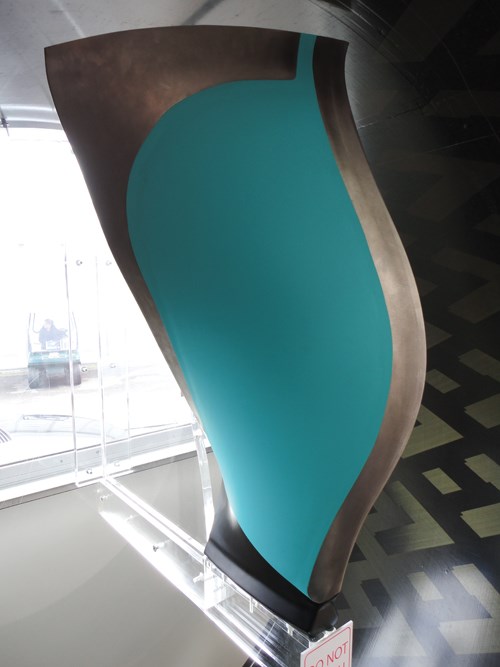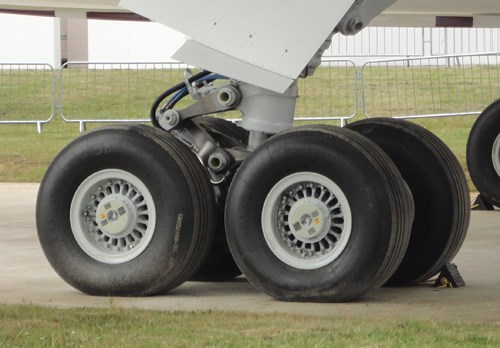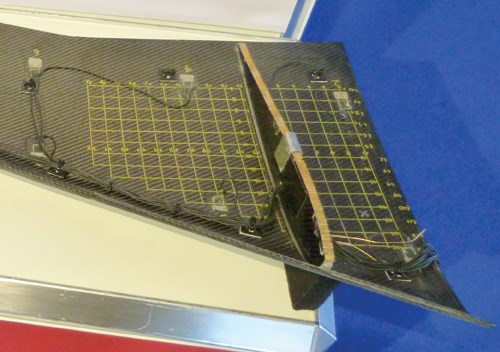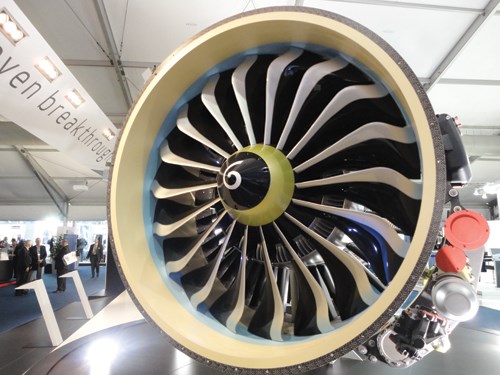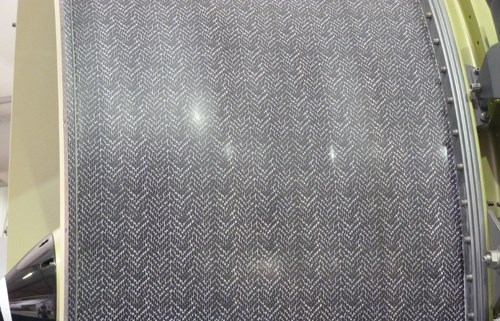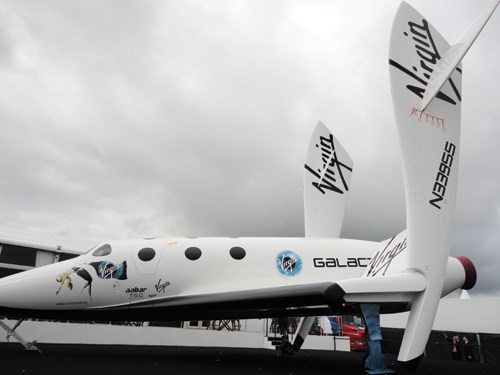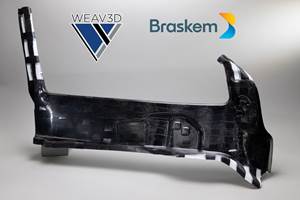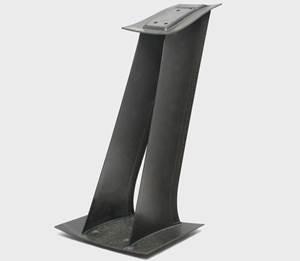2012 Farnborough International Airshow Report
The biennial U.K. air event delivered the clear message that the aerospace industry — and aerospace composites with it — continue to soar.
Persistent rain throughout England threatened to dampen the 2012 Farnborough International Airshow (July 9-15, Farnborough, U.K.), but this popular event remained, for the most part, dry and productive.
Flying demonstrations included an Airbus (Toulouse, France) A380, a Boeing (Chicago, Ill.) 787 Dreamliner (its first appearance at Farnborough), a V-22 Osprey and, to the delight of Brits and aircraft enthusiasts, an Avro Vulcan — the composites nonintensive delta-winged bomber that was one of the mainstays of the U.K.’s Royal Air Force from 1956 to 1984.
On the ground, initial attention was paid to Ray Conner, who was recently named president and CEO of Boeing’s Commercial Airplanes business unit. He provided an update on his business segment, reporting that Boeing has a seven-year, 4,000-plus airplane backlog and that the company plans to increase its commercial aircraft build rate by 30 percent by mid-2014.
Conner also noted that Boeing has delivered 13 787s to date, with “a number of airplanes in change appropriation.” These are the already built but as yet undelivered 787s that still require updating or repair to correct material and manufacturing flaws discovered after several of the craft were assembled. The good news, he says, is that Dreamliners currently coming off the assembly line are fully functional and free of problems.
Boeing is currently completing 3.5 787s per month, with a goal of 5 per month by the end of this year, and 10 per month by the end of 2014. Asked about maintenance of the 787s in service, Conner noted that there have been “a couple lightning strikes” on 787s in service, which prompted successful repairs that, he said, took about as long as metallic repairs. Also in the pipeline is the 787-9, a longer version of the original 787, which has begun assembly and should come on the market in 2014.
Conner said there are more than 1,000 orders on the books for the 737 MAX. This new variant of Boeing’s venerable 737 aricraft is fitted with LEAP jet engines built by CFM International (Cincinnati, Ohio). Due in part to the engine change, this model is showing a 13 percent fuel burn improvement compared to the 737 Next-Generation aircraft and is on target to enter service in 2017. Looking further down the road, Conner said Boeing is assessing the design and build of two new craft: the 787-10x, which would extend the 787-9’s fuselage and seat 300 to 330 passengers; and the 777X, a redesigned version of the popular 777, which would feature new wings, new engines and, possibly, a new fuselage. Boeing, said Conner, is “absolutely committed to these airplanes going forward.”
On the composites front, CFM’s LEAP engine was a prominent fixture at the show. The engine features carbon fiber blades and a fan shroud manufactured via resin transfer molding (RTM) by Albany Engineered Composites Inc. (Rochester, N.H.). Albany, a specialist in weaving and preforming, says it is building a new 250,000-ft2 (23,336m2) facility in Rochester and a nearly identical facility in Le Havre, France, for the manufacture of the engine structures. The fan casing is made by 3-D weaving, which includes the flanges. The preforms are woven in arcs and are assembled so the joints in one layer do not coincide with the joints in the layer below it. The early development part on the Albany stand showed some small areas of resin richness, but the components on the LEAP engines displayed at the CFM stand showed no sign of this problem. For comparison purposes, the Cincinnati, Ohio-based GE Aviation stand displayed the composite fan case developed just a few years ago for the GEnx engine by GKN Aerospace (Isle of Wight, U.K.). This appeared to be made from conventional woven carbon fiber. According to CFM (a joint venture between GE Aviation and Paris, France-based jet-engine maker Snecma), the LEAP will be featured exclusively on the Boeing 737 MAX and on about 50 percent of Airbus A320neo aircraft.
Albany also reported that it is making the 3-D woven, through-thickness-reinforced carbon fiber preforms for the manufacture of composite drag and side braces on the 787 (see photo), which are currently fabricated from metals. Albany is sending the preforms to Aircelle (Le Havre, France), where they are infused via resin transfer molding (RTM) to form the braces for 787 supplier Messier-Bugatti-Dowty (Vélizy, France). It is not known when these composite braces might be integrated into the 787 landing gear.
GKN, which has formed a joint venture, CTAL, with London-based Rolls-Royce to manufacture jet engine parts, is initially tackling the task of converting two components to composites: the fan blade and the fan case. Several other parts have been identified for future application of composite materials, such as annulus fillers (called fan spacers in the U.S.) and outlet guide vanes. The challenge, said GKN officials, is how to meet the production requirement of one fan blade every 15 minutes.
GKN has assigned the task to chief engineer Andy Portsmore, a transferee from GKN’s Automotive Div. Reportedly, the process will be highly automated. Machinery (GKN wouldn’t elaborate on its type or configuration) will drive the processing times. Portsmore noted that most of the challenging aspects of composite blade manufacturing are now behind GKN, but the company did say that manufacture of the titanium erosion shield for the blade’s leading edge is still proving unusually complex. Specifically, the required tolerances for the titanium component were proving more difficult to match than the tolerances for the blade’s composite component. GKN says production blades will be made in a joint-venture facility colocated with a neighboring GKN plant that is dedicated to fan-case production.
In other GKN news, it is well known that the company is investing heavily in automated fiber placement (AFP) for the manufacture of rear spars for the A350. In fact, five machines will be required to meet planned rates of 13 spar sets per month, consuming 20 metric tonnes (44,092 lb) of material per month. What was not known until the show at Farnborough was how fan cases would be made. A schematic of the proposed method was on display. It uses two robots working in unison, on the same fan case, using AFP heads.
At the Farnborough Innovation Centre, Dr. Carol Featherston from Cardiff University (Cardiff, U.K.) showed an advanced form of acoustic monitoring equipment for use on aircraft composite structures. The development work was sponsored by a number of aerospace companies, including Boeing and Airbus. The equipment features an array of sensors that can locate damage initiation and propagation by gauging the different times at which acoustic signals arrive at the nearby sensors. This technique is extremely accurate when applied to metallic structures that have a constant thickness and no features (e.g., lightweighting holes). However, in a complex layup, such as a wingskin, the speed of sound varies in different directions due to the nonisotropic nature of composite laminates. To calibrate the sensors, Cardiff researchers have developed an unusual procedure that involves breaking pencil leads at various known points on the skin.
The work was aimed at providing an unobtrusive, low-weight system that could be used in service. The system development was conceived in two stages. The first-stage system was on display, mounted on a scale model of a carbon fiber-reinforced polymer (CFRP) wing. As the photo (above) shows, the display demonstrated the use of low-profile sensors based on piezoelectric fibers. The sensors are flatter than the conventional sort that use piezoelectric crystals. The large number of cables on this first-stage system come with a weight and cost penalty that would be acceptable only in a developmental aircraft. To make the system practical for in-service monitoring of certified aircraft structures, Featherston’s team is developing a Wi-Fi system for the second-stage device that will allow the sensors to deliver data without hardwiring.
On the Russian front, AeroComposit (Moscow, Russia) reported that it is making the wing for the forthcoming Irkut MC-21, a direct competitor for the Comac C919, the Airbus A319, the Bombardier CSeries jets and the Boeing 737 MAX. The MC-21, which already has accrued 256 orders, is expected to enter production in 2013, followed by first flight in 2015 and delivery in 2017. The plane comes in two variants that seat 150 and 180 passengers, respectively. Composites account for about 30 percent of the plane’s structural weight. Notably, the aircraft’s carbon fiber composite wing is made with an out-of-autoclave (OOA) resin and a vacuum infusion process. The specimen on display at the Irkut stand was the first structural test specimen. It was made by FACC (Ried im Innkreis, Austria), with which AeroComposit has formed a joint venture. Production wingboxes will be made in Ulyanovsk, Russia. AeroComposit also will make all the high-lift devices for the wing of the MC-21 at its factory in Kazan, Russia, where the company is already making similar components for the smaller Russian SSJ100 aircraft.
Spirit AeroSystems (Wichita, Kan.) had two technically intriguing parts on its stand. The first was an integrally stiffened fan cowl skin made on a standard AFP machine in Spirit’s development department. The carbon fiber reinforcements were fiber-placed dry and cured OOA after infusion. The dry tow and a toughening veil were supplied by Hexcel (Stamford, Conn.). The second part was a cylindrical structure with internal stiffeners. Historically, parts with trapping geometries have required multipart tools that can be disassembled to permit postcure removal. These come at great expense and require constant maintenance. Spirit claims to have developed a “reconfigurable” tooling process, called Inflexion, that has reduced its tooling costs.
Virgin Galactic (Las Cruces, N.M.) brought to Farnborough its SpaceShipTwo spacecraft, a composites-intensive passenger craft developed by Scaled Composites LLC (Mojave, Calif.). At the show, the company announced plans for a privately funded satellite ferry called LauncherOne. This aircraft-launched rocket is designed to deliver small satellites into orbit and, Virgin contends, could begin commercial flights as early as 2016. LauncherOne will be a two-stage vehicle capable of carrying up to 500 lb/225 kg to orbit for a mission price tag less than $10 million. The rocket will be launched from Virgin Galactic’s WhiteKnightTwo, the same aircraft type that already is set to carry SpaceShipTwo aloft to begin suborbital tourism missions.
Virgin Galactic founder Sir Richard Branson also revealed that the company has, thus far, accepted deposits for suborbital flights on SpaceShipTwo from 529 aspiring astronauts, more than the total number of people who have, so far, been to space. This news accompanied reports of recent test activity that has confirmed all major components of SpaceShipTwo’s rocket system have been qualified for powered flight. Virgin Galactic’s space tourism venture is reportedly on track to begin operations before year’s end.
Related Content
Braskem demonstrates PP solutions using Weav3D composite lattice technology
Partnership combines Braskem’s polypropylene sheets with Weav3D Rebar for Plastics technology to address new structural, automotive applications requiring high-strength, lightweight material solutions.
Read MoreComposite resins price change report
CW’s running summary of resin price change announcements from major material suppliers that serve the composites manufacturing industry.
Read MorePlant tour: Albany Engineered Composites, Rochester, N.H., U.S.
Efficient, high-quality, well-controlled composites manufacturing at volume is the mantra for this 3D weaving specialist.
Read More3D weaving capabilities achieve complex shapes, reduce weight and cost
JEC World 2024: Bally Ribbon Mills is displaying film-infused 3D woven joints, woven thermal protection systems (TPS) and woven composite 3D structures.
Read MoreRead Next
VIDEO: High-volume processing for fiberglass components
Cannon Ergos, a company specializing in high-ton presses and equipment for composites fabrication and plastics processing, displayed automotive and industrial components at CAMX 2024.
Read MorePlant tour: Daher Shap’in TechCenter and composites production plant, Saint-Aignan-de-Grandlieu, France
Co-located R&D and production advance OOA thermosets, thermoplastics, welding, recycling and digital technologies for faster processing and certification of lighter, more sustainable composites.
Read More“Structured air” TPS safeguards composite structures
Powered by an 85% air/15% pure polyimide aerogel, Blueshift’s novel material system protects structures during transient thermal events from -200°C to beyond 2400°C for rockets, battery boxes and more.
Read More


